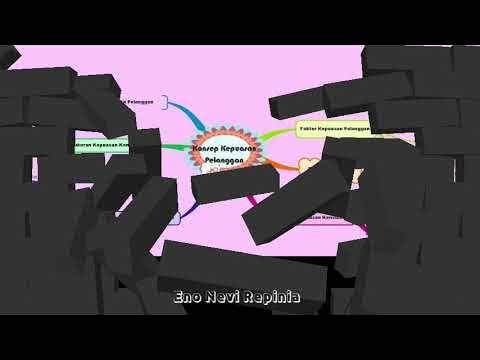Improve your customer relationships
Summary
TLDRIn this video, Tom explores the dynamics between customer satisfaction and loyalty, emphasizing their importance for businesses. He explains that satisfaction is an emotion while loyalty is a behavior, and uses a graph to illustrate their relationship. Tom discusses different customer types across various quadrants, highlighting strategies to manage and improve customer relationships. He suggests a three-step process for businesses to understand and enhance satisfaction and loyalty, ultimately aiming to create advocates. For more detailed insights and resources, viewers are directed to Tom's website.
Takeaways
- 😀 Customer satisfaction and loyalty are crucial for encouraging customers to spend more time and resources on your offerings and to become advocates.
- 🔒 The difference between satisfaction and loyalty is that satisfaction is an emotion while loyalty is a behavior.
- 📈 A graph can illustrate the relationship between satisfaction (vertical axis) and loyalty (horizontal axis), showing different customer types in each quadrant.
- 👶 The bottom left quadrant includes new customers who have no experience yet, and their perception needs to be managed for repeat business.
- 😠 The bottom right quadrant has frustrated customers who are difficult to win back due to negative experiences.
- 😞 The left side of the graph represents dissatisfaction, with customers who are generally grumpy and may not be worth retaining.
- 🔒🔑 The top left quadrant shows loyal but unhappy customers, often due to feeling trapped by contracts or lack of choice.
- 💻 The top right quadrant includes highly satisfied customers who are not loyal, indicating a lack of product or service differentiation.
- 🍏 Apple is highlighted as an example of building loyalty through excellent products and additional services that create a 'walled garden'.
- 🛠️ The three-step process involves internal understanding, customer communication for reality check and expectation management, and planning for improvements.
- 🔄 Continuous tracking and understanding of customer needs and expectations are essential as they evolve over time.
Q & A
What is the main focus of Tom's presentation?
-The main focus of Tom's presentation is the concept of customer satisfaction and loyalty, and how understanding and controlling these elements can encourage customers to spend more time and resources on the products and services offered.
Why are customer satisfaction and loyalty important for a business?
-Customer satisfaction and loyalty are important because they encourage customers to return more often, potentially become advocates for the brand, and promote the products and services to others.
What is the difference between customer satisfaction and customer loyalty according to the script?
-Customer satisfaction is an emotion, where customers feel happy and believe they are receiving good quality service. Customer loyalty, on the other hand, is a behavior, reflecting whether customers come back and purchase more or use the service again.
How does Tom suggest visualizing the relationship between satisfaction and loyalty?
-Tom suggests visualizing the relationship between satisfaction and loyalty on a graph with satisfaction on the vertical axis and loyalty on the horizontal axis, creating four quadrants to represent different types of customer relationships.
What types of customers are found in the bottom left quadrant of the graph?
-The bottom left quadrant represents customers who are completely new to the product or service, with no experience or idea about their happiness or likelihood of using the product or service again.
Why might customers in the bottom right quadrant be unhappy and yet remain loyal?
-Customers in the bottom right quadrant may remain loyal because they feel trapped in the relationship due to limited choices or contractual obligations, even though they are unhappy with the product or service.
What does the top right quadrant of the graph represent in terms of customer satisfaction and loyalty?
-The top right quadrant represents customers who are very satisfied with the product or service but are not loyal, meaning they may not return to the same brand or product in the future.
How does Apple differentiate itself and build customer loyalty according to the script?
-Apple differentiates itself and builds customer loyalty by offering excellent products with a good feature-to-price ratio and by providing additional services such as iTunes, Apple Cloud, and quality and security guarantees that create a 'walled garden' of services that are difficult to leave.
What is the three-step process Tom outlines for applying the concept of satisfaction and loyalty in a business environment?
-The three-step process includes: 1) Working internally to understand the full scope of satisfaction and loyalty and how different elements of the product and service affect customer relationships. 2) Talking to customers to get their point of view and manage their expectations. 3) Bringing the customer feedback back into the organization to plan and implement changes to improve the relationship.
Where can viewers find more information on customer satisfaction and loyalty as presented by Tom?
-Viewers can find more information, including a written text, templates for sales teams or customers, and a PowerPoint file, on Tom's website, B2B dt.com.
Outlines

このセクションは有料ユーザー限定です。 アクセスするには、アップグレードをお願いします。
今すぐアップグレードMindmap

このセクションは有料ユーザー限定です。 アクセスするには、アップグレードをお願いします。
今すぐアップグレードKeywords

このセクションは有料ユーザー限定です。 アクセスするには、アップグレードをお願いします。
今すぐアップグレードHighlights

このセクションは有料ユーザー限定です。 アクセスするには、アップグレードをお願いします。
今すぐアップグレードTranscripts

このセクションは有料ユーザー限定です。 アクセスするには、アップグレードをお願いします。
今すぐアップグレード5.0 / 5 (0 votes)






